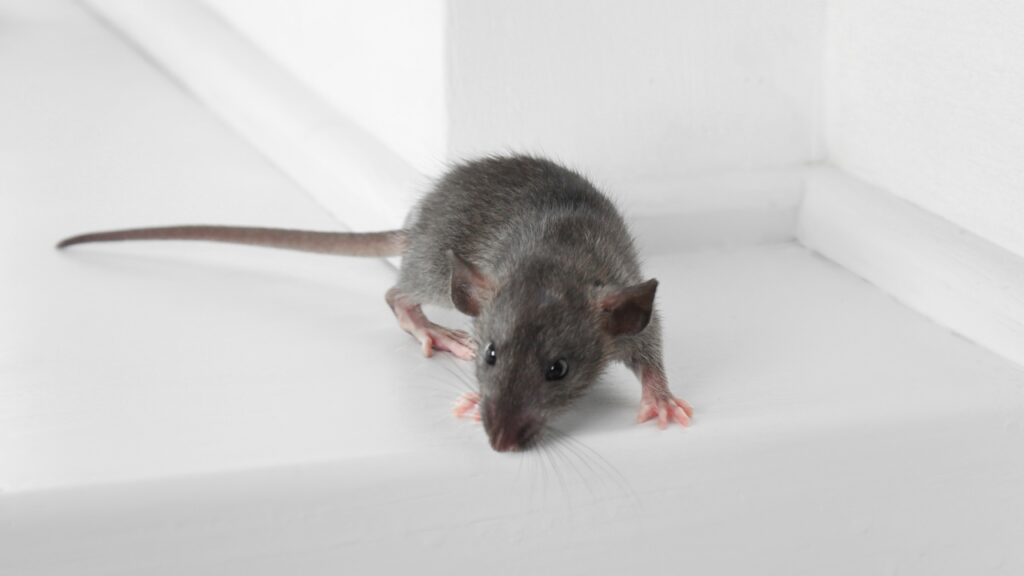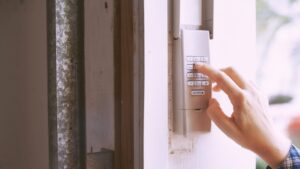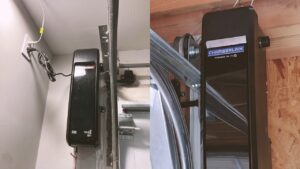If you’ve ever had a rat problem in your garage, you know how much of a headache they can be. But rest assured, Don’t worry, though, many of us have been there too.
According to the Census Bureau (CB), nearly 14.8 million people in the U.S. reported seeing mice and rats in their homes, with garages particularly vulnerable.
This alarming statistic underscores the widespread nature of the issue, highlighting the urgent need for effective solutions. In this article, we’ll highlight ten effective ways to eliminate rats in the garage.
This will ensure you safeguard your property, maintain a clean and hygienic environment, and protect your family’s well-being.
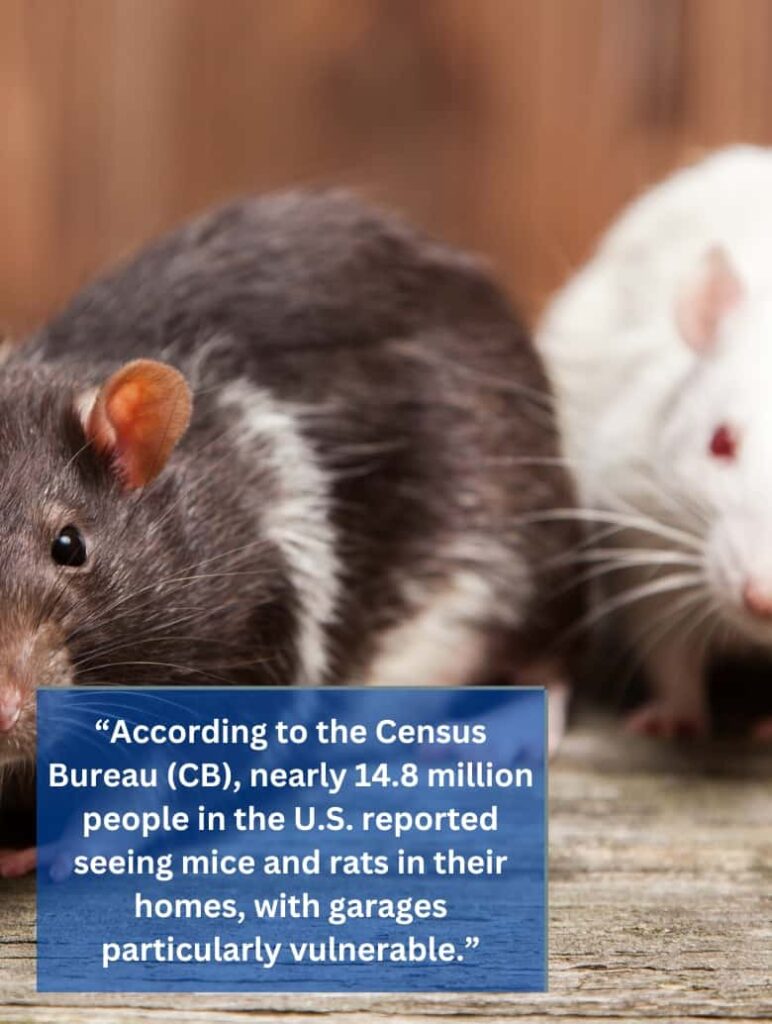
Connect With A Garage Expert
Connect with local experts, Compare quotes, Get the best price.
What Attracts Rats to Your Garage?
Here are several common elements that can make your garage highly appealing to these rodents.
Food

Rats possess an acute sense of smell, detecting the faintest odors of potential meals. If your garage doubles as a storage space for various items, like pet food, birdseed, or groceries, it can inadvertently become a haven for rats due to the presence of food.
Interestingly, the presence of crickets in the garage can also contribute to attracting rats. Crickets, with their constant chirping and movement, can become a source of food for rats, inadvertently leading these rodents into your garage in search of a meal.
Additionally, leftover food in your car can indirectly attract rats to your garage. Food residues, like bread crumbs, spilled drinks, or food wrappers, emit a strong scent that rats can easily detect.
This scent is an enticing trail for rats, leading them from your car to your garage and potentially causing an infestation.
Water
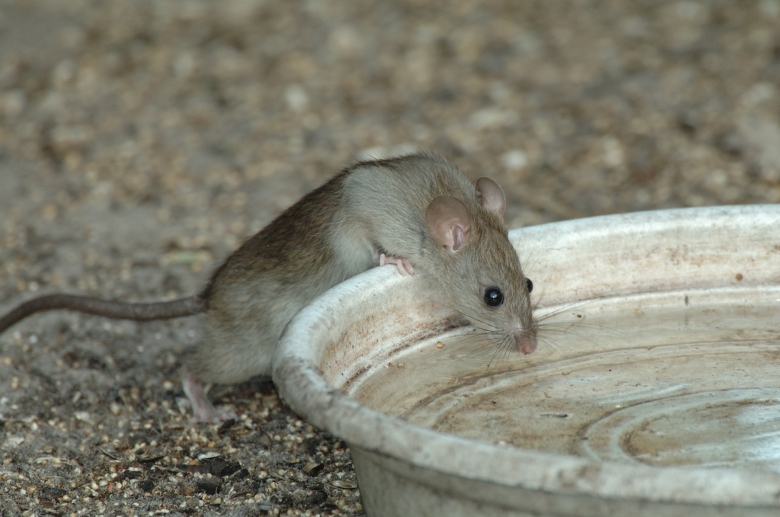
Much like food, rats are irresistibly drawn to places where they can easily access water. In your garage, this attraction can stem from various sources, such as:
- Leaky pipes,
- Dripping faucets,
- Pet water bowls, and
- Rainwater that accumulates in the garage during wet spells
Therefore, addressing these water sources is crucial in deterring rats from settling in your garage.
Cluttered Spaces
A cluttered garage provides rats with abundant hiding spots and safe pathways to explore. Piles of boxes, unused appliances, and neglected clutter offer rats the ideal environment to establish nests and evade detection.
Rat Droppings in the Garage
Oddly enough, rat droppings in your garage can attract more rats. Rats use these droppings to communicate and mark territory, signaling to other rats that the area is suitable for habitation. Promptly cleaning and disinfecting rat droppings is vital to deter further infestations.
Past Rat Infestations
If your garage has had a previous rat infestation, it may be more susceptible to future incursions. Rats leave behind pheromone trails that signal other rats that the location is habitable. Taking proactive measures to prevent recurrence is essential to break this cycle.
How Do Rats Get into Your Garage?
Rats enter your garage through holes, drainage systems, and by creating openings themselves. We explain more details on these methods below.
Through Holes
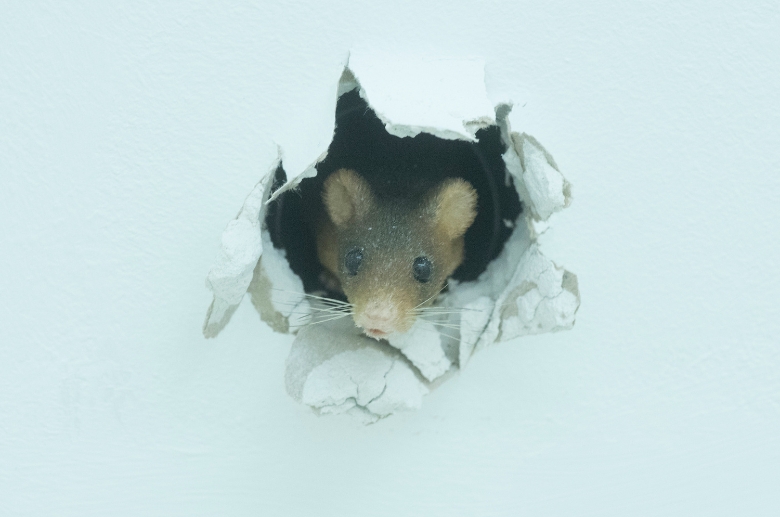
Rats can skillfully exploit small openings and holes as entry points. Incredibly, they can squeeze through openings as small as a half-inch (approximately 1.3 centimeters) in diameter.
These can be gaps around doors, windows, or utility lines that are not properly sealed. Hence, sealing such openings is essential to block these tiny intruders effectively.
Nearby Drainage Systems

Rats are also capable swimmers. They can enter your garage through drainage systems, including sewer pipes or drains that lead to your property.
If not properly sealed, these systems serve as hidden highways for rats, allowing them to swim into your garage.
Self-Created Holes
Rats are industrious creatures and can create openings on their own when necessary. They may gnaw through weak points in building structures, such as wooden panels or drywall, to establish new entry points. This method underscores regular property maintenance’s importance in detecting and repairing potential vulnerabilities.
Through Vents
Rats are particularly skilled at navigating through narrow spaces, making vents an attractive pathway for them.
Whether it’s an attic vent, a crawl space vent, or a utility vent, if not adequately secured, these openings can become avenues through which rats infiltrate your garage.
Through Climbing
With their climbing abilities, these rodents can scale various surfaces, such as fences and utility poles, to access your garage. They may utilize overhanging tree branches, vines, or nearby structures as makeshift pathways leading to your garage area.
Connect With A Garage Expert
Connect with local experts, Compare quotes, Get the best price.
10 Ways to Get Rid Of Rats in The Garage
Ensuring your garage remains rat-free is paramount to maintaining a safe and clean environment. Rats can be persistent, but you can fortify your garage against these unwelcome visitors with the right strategies.
Below, we explore ten effective methods to achieve a rat-free garage.
1. Find Where They Are Nesting
Rats often nest in secluded and cluttered areas of your garage. This helps avoid potential predators, ensuring their safety.
To detect these nests, look for signs such as shredded materials, droppings, and gnaw marks. Inspect hidden corners and spaces within stored items.
2. Do Not Keep Food and Water in Your Garage
It’s crucial to avoid storing food or water in your garage, as it attracts rats. Instead, keep food items sealed in airtight containers inside your home. Store pet food in rat-proof containers or bring it indoors after use.
3. Always Keep Your Garage Clean and Organized
A clutter-free garage leaves rats with fewer hiding spots. Here are tips to ensure you keep your garage clean and organized:
- Clear Out Clutter: Remove unnecessary items from your garage. Sort your belongings and decide what to keep, donate, or discard. Reducing clutter minimizes hiding spots for rats and makes it easier to spot signs of infestation.
- Store Items Properly: Organize your belongings using secure lids with shelves, cabinets, and plastic bins. Store items off the floor whenever possible to create less inviting hiding spots for rats. Keep valuable or attractive materials like cardboard boxes and fabrics inside sealed containers.
- Regular Cleaning: Establish a cleaning routine for your garage. Sweep the floor regularly to remove crumbs and debris that can attract rats. Wipe down surfaces and shelves to eliminate food residues and odors. Don’t forget to clean up spills promptly.
- Trash Management: Dispose of trash promptly and properly. Use tightly sealed trash bins and keep them away from the garage’s interior. Regularly empty your trash bins to prevent them from becoming a potential food source for rats.
4. Repair Leaks and Holes in Your Garage
Seal the gaps, cracks, or holes in your garage to prevent rats from entering. Pay special attention to openings around doors, windows, utility lines, and vents. Use materials like steel wool or caulk to block these access points effectively.
5. Get a Cat

Cats are natural predators of rats and can deter them from entering your garage. Consider adopting a cat from a local shelter or rescue organization. Ensure your cat is well-fed and cared for, as a contented cat is more likely to actively patrol your garage for rodents.
6. Tidy up Woodpiles and Keep Them Light
Tidying up your woodpile helps remove potential hiding spots for rats and breeding opportunities.
Elevate the woodpile on racks or pallets and ensure it is not in direct contact with the garage’s walls or floor. This reduces the opportunities for rats to establish a colony and nest in your garage.
7. Use a Rat Deterrent
Rat deterrents are devices (or substances) that discourage rats from entering your garage. Ultrasonic rat-repellent devices emit high-frequency sounds unpleasant to rats but usually inaudible to humans.
Place these devices strategically in your garage to create an uncomfortable environment for rats, prompting them to seek refuge elsewhere. However, follow the manufacturer’s instructions for proper placement and effective usage.
8. Set Rat Traps
Mouse traps are effective tools for capturing rats and mice. They come in various types, including snap, electronic, and glue traps. Snap traps are among the most common and humane options.
To safely set up a snap trap, bait it with a suitable attractant like peanut butter or cheese. Place it in areas with rat activity, and follow the manufacturer’s guidelines for safe handling.
9. Place Bait Stations Across the Garage
These are enclosed devices that hold rodenticide baits. These stations are designed to protect pets and children from direct contact with the toxic bait. Place bait stations strategically where rats are likely to frequent, such as along walls or near entry points.
Also, follow the manufacturer’s instructions for proper placement and use gloves when handling the bait and stations.
10. Use Dry Ice
Dry ice is an effective tool for rat prevention due to its ability to release carbon dioxide gas, which rats find threatening. Place it in a container and put the container in areas with rat activity.
Be cautious when handling dry ice, as it is extremely cold and can cause frostbite. Use insulated gloves and follow safety guidelines to properly handle dry ice.
Signs That There Are Rats in Your Garage
Here are telltale signs that you have rats in the garage:
- Dark droppings that resemble small pellets
- Gnaw marks, especially on wires, wood, cardboard, and plastic.
- A strong ammonia-like urine odor in your garage.
- Footprints or tail marks may appear as tracks in dusty or soiled areas.
- Noises such as scratching, scurrying, or squeaking sounds, especially at night.
- The presence of holes and burrows
- Chewed packaging of food or other stored items
- Food debris around their feeding areas.
- The presence of dark, greasy rub marks along walls or baseboards where rats frequently travel.
- Destroyed plants in your garage.
- Visual sighting in the garage
- Rat hair along the wall, path, feeding area
Connect With A Garage Expert
Connect with local experts, Compare quotes, Get the best price.
The Dangers Rats Can Bring To Your Garage
Rat infestations in your garage can pose many dangers, extending beyond the inconvenience of their presence. Here are common dangers of rats in the garage:
Disease Transmission and Health Hazards
Because they’re disease carriers, some diseases rats can transmit include Hantavirus, Leptospirosis, and Salmonellosis. These diseases are primarily spread through contact with rat urine, feces, or saliva.
Damaging Belongings in Your Garage
Rats are notorious for gnawing, which can significantly damage items stored in your garage. They frequently target electrical wiring, insulation, wooden structures, and vehicles.
This damage isn’t limited to material possessions—it can also compromise the safety and functionality of your garage, leading to costly repairs.
Rapid Reproduction Rates
Female rats can produce 4-5 litters annually, averaging 6-8 pups per litter. This rapid reproduction rate can quickly escalate the rat population in your garage, making it challenging to control and eradicate the infestation.
Noise and Disruption
Since rats are nocturnal creatures, their scurrying, scratching, and squeaking noises can disrupt your sleep and overall quality of life. These disturbances can be particularly troublesome if your garage is attached to or close to your home, affecting your peace and comfort.
Infiltration of Walls and Home
Rats can infiltrate the walls of your garage and, if given the opportunity, may spread further into your home. Once inside the walls, they can cause structural damage and create a potential pathway into your living spaces.
This can lead to more extensive infestation disease transmissions and further compromise the integrity of your property.
Conclusion
Rats are a nuisance and can pose real risks to your health, property, and peace of mind. They can also multiply rapidly, making it challenging to control the infestation. This makes it crucial to take swift action to prevent rats in the garage.
Consider professional help from Garage Insiders if necessary. Remember, having a rat-free garage guarantees a safer and cleaner space and helps maintain the overall condition of your property.

